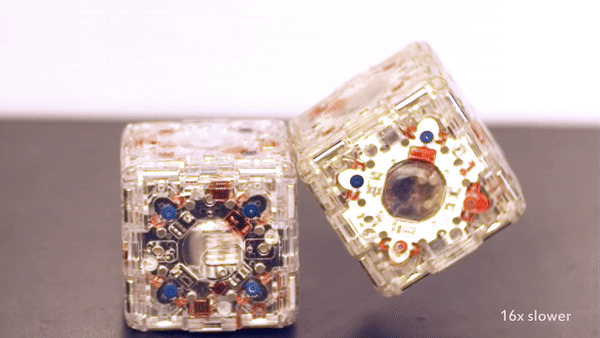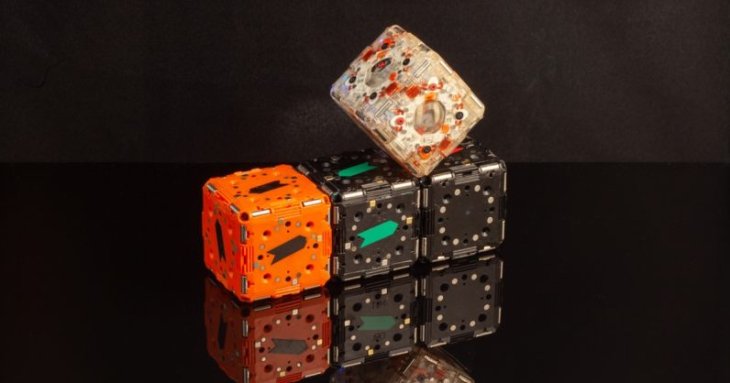These Block Bots From MIT Can Stack And Assemble Themselves Into Emergency Staircases
Harin - Nov 01, 2019

The M-Blocks from MIT can do some impressive tricks including climbing, jumping, and assembling themselves into larger structures in Big Hero 6 style.
- Cafe In Tokyo With Robot Waiters Controlled By Disabled Staff
- Best Robot Vacuums In India To Clean Carpets, Wood Floor And Pet Hair
- AI Is Being Trained To Identify Faces In The Dark Using Thermal Images
If you put these MIT M-Block robots next to the leaping humanoids of Boston Dynamics, they might not really be eye-catching. Putting aside their lack of limbs, the latest version of the blocks can do some impressive tricks including climbing, jumping, and assembling themselves into larger structures in Big Hero 6 style.
Undoubtedly, those skills could really be helpful given that they can assemble themselves and turn into an emergency staircase for the rescue of the survivors that are trapped inside a building. Or they can be deployed like real-life Minecraft blocks.

Inside each of the M-Block is a flywheel spinning at 20,000 rpm. Besides this flywheel, on each edge as well as face, there are permanent magnets. The combination allows them to use angular momentum to crawl, leap and spin, then attach themselves magnetically to other M-Blocks. Although the process seems to be simple, these robots can attach themselves to form structures and carry out tasks.
John Romanishin, the lead author, said that while the movement mechanisms of other robotic systems are much more complicated since they require many steps, their system is much more cost-effective and scalable. The unique thing about the M-Blocks is that they are robust, inexpensive and can be easily scaled to a million modules.
There are 24 different directions that the block can move in. Since they don’t have any protruding limbs, they won’t have any difficulty avoid collisions as well as clearing obstacles. The blocks communicate using barcodes which, compared to radio waves or infrared light, is more reliable, especially when there are a lot of blocks in the same spot.
To see whether the blocks, from a random structure, can form a straight line, the researchers did an experiment. In order to accomplish that, the blocks need to figure out their connection and in which directions should they move to form a line. The result is that about 90% of them could do so.
At the moment, only simple things such as form a light, follow arrows, follow lights can the 16 blocks do. What the researchers want to do next is to increase the number of blocks with improved capabilities to form more complex structures. We have seen that in movies before, but the researchers believe that instead of terminating lives, the M-Blocks will be extremely helpful in saving lives.
Featured Stories

Features - Jul 01, 2025
What Are The Fastest Passenger Vehicles Ever Created?

Features - Jun 25, 2025
Japan Hydrogen Breakthrough: Scientists Crack the Clean Energy Code with...

ICT News - Jun 25, 2025
AI Intimidation Tactics: CEOs Turn Flawed Technology Into Employee Fear Machine

Review - Jun 25, 2025
Windows 11 Problems: Is Microsoft's "Best" OS Actually Getting Worse?

Features - Jun 22, 2025
Telegram Founder Pavel Durov Plans to Split $14 Billion Fortune Among 106 Children

ICT News - Jun 22, 2025
Neuralink Telepathy Chip Enables Quadriplegic Rob Greiner to Control Games with...

Features - Jun 21, 2025
This Over $100 Bottle Has Nothing But Fresh Air Inside

Features - Jun 18, 2025
Best Mobile VPN Apps for Gaming 2025: Complete Guide

Features - Jun 18, 2025
A Math Formula Tells Us How Long Everything Will Live

Features - Jun 16, 2025
Comments
Sort by Newest | Popular